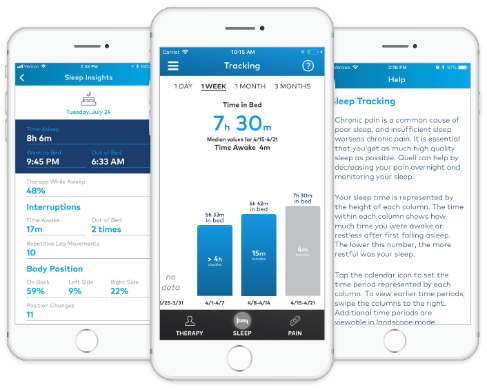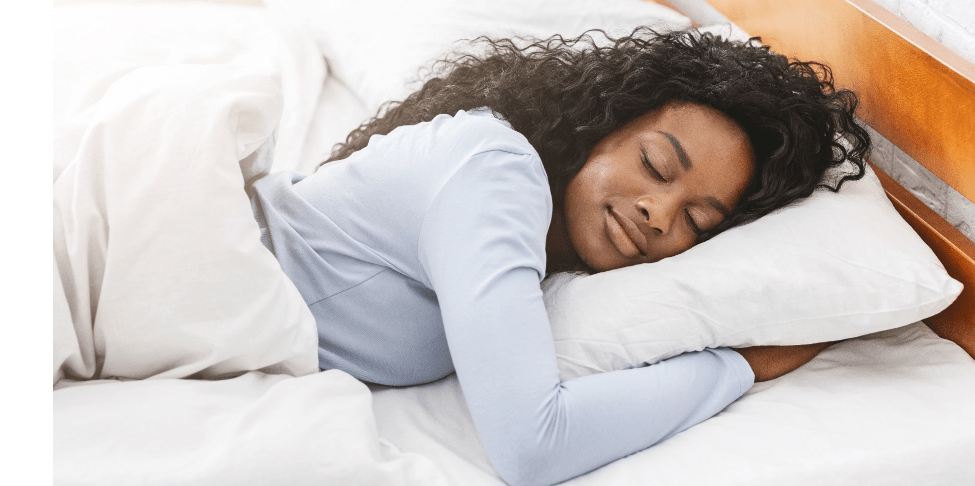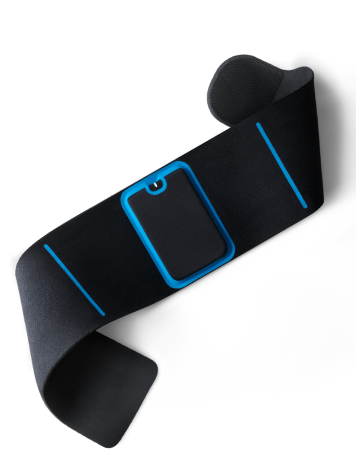Quell measures and tracks how much sleep you are getting.
Good sleep is essential to maintaining health. Chronic pain is a common cause of poor sleep, which is why many people with chronic pain do not get a good night’s rest and feel tired upon awakening. Inadequate sleep can worsen chronic pain, which can trigger a vicious cycle of decreased activity during the day, less sleep, and even worse pain. It is essential that you get as much high-quality sleep as possible.
Quell measures and tracks how much sleep you are getting and presents this information to you via the Quell Relief app. Quell also analyzes your body movements and position while sleeping. This sleep data is meant to help you optimize healthy sleep. It is not intended for use in the diagnosis, mitigation, treatment, or prevention of sleep disorders or other related conditions.

The table below explains how Quell Sleep Insights can help you understand the amount and quality of your sleep. The frequently asked questions provide additional information and useful tips. If you are experiencing overnight pain, you may increase Quell use at bedtime and while sleeping. If you have concerns about your sleep, you should discuss them with your doctor.
Time Asleep
Amount of time you sleep in a night
This number will help you track your sleep duration so that you can take steps to achieve healthier sleep.
Went to Bed, Got out of Bed
Time you spend in bed; if you watch TV or read before bed, that time may be included
It will remind you how much time you spend in bed.
Therapy While Asleep
Percentage of time sleeping during which you received therapy
If you are having difficulty sleeping due to pain, you may want to increase Quell use during sleep.
Time Awake
Amount of time you were restless or awake after first falling asleep during the night
High quality restful sleep is uninterrupted and associated with relatively little movement.
Out of Bed
How many times you get out of bed during the night
Getting out of bed during the night makes it difficult to sustain high-quality sleep.
Periodic Leg Movements
Number of periodic leg movements while you sleep
Periodic leg movements may disrupt your sleep.
On Back
Percentage of time you sleep on your back
You may want to change the amount of time you sleep on your back.
On Side
Percentage of time you sleep on your left and right sides
Sleeping on your side is generally regarded as the healthiest position.
Position Changes
Number of times you change position while sleeping
Changing position while sleeping is important for healthy sleep; too much or too little may lower your sleep quality.


